| Archery |
| Brewing |
| Calligraphy & writing |
| Combat |
| Cooking |
| Dance |
| Etiquette |
| Household life |
| Medicine |
| Music |
| Needlework |
| Playacting |
| Religion |
| Storytelling |
| The encampment fulfilled four important functions: firstly it was intended to give a strong visual impression of the past, with the most authentic artifacts and furnishings possible; secondly it offered shelter from all the vicissitudes of the weather - wind, rain or burning sunshine; thirdly it was the framework or setting for performances and fourthly it provided the genuine camping facilities which were necessary. The camp consisted of two tents: a round pavilion which was the lady’s personal quarters, fitted out for her comfort and convenience: a luxurious bedchamber, richly hung and furnished. |
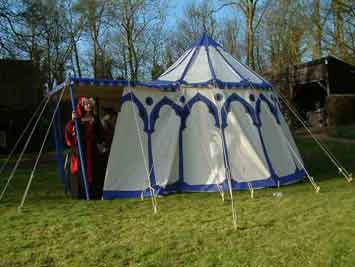
| This tent was made by Victor James and Anne made the front awning and painted it. The inspiration for its design came from this illumination from the French fifteenth century manuscript, “Les Livres des Histoires dou Commencement dou Monde”: |
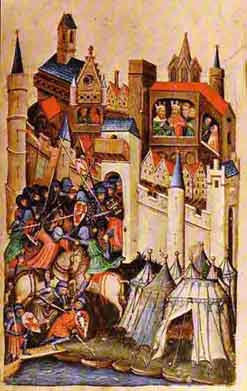
Here are some interior views: |
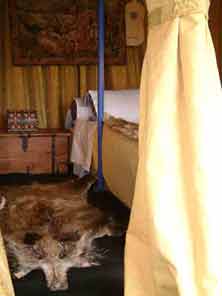
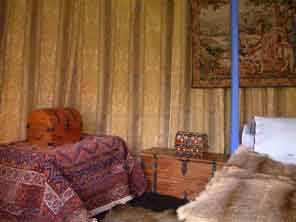
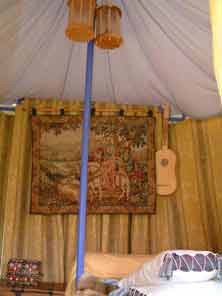
| Great care was taken over making authentic furnishings such as these pillows the design of which was taken from early pictures. |
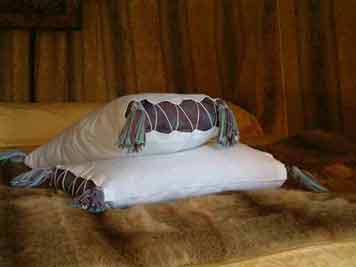
Although the round pavilion is the most familiar
shape of early European tents, there is pictorial evidence for tents of
a simple rectangular shape, such as this delightful picture of an encampment
before a tournament in which the precious horses are housed in tents of
both type: |
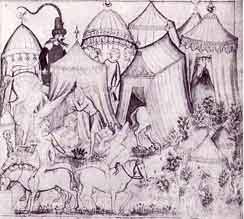
| A painting showing the Siege of Mortagne in 1377 shows tents of this shape elaborately painted: |
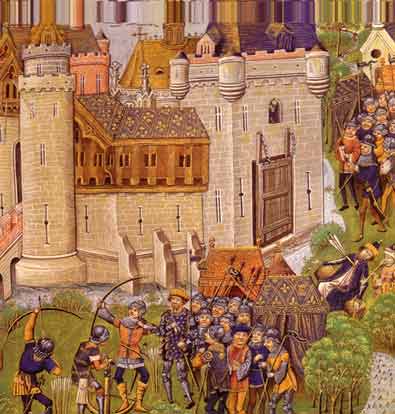
and so the second tent is of this design because it
could be was created on a sturdy domestic sewing machine. |
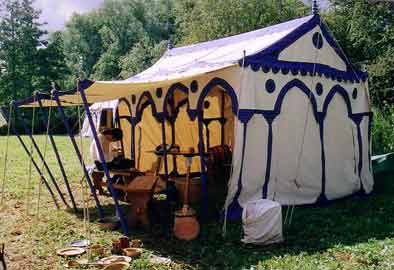
| Tents of all descriptions provided many
useful functions in society, from the simple booths and bender tents of
traders at markets and fairs - |
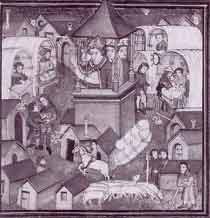
Through military encampments for siege, battle and
tournament, culminating in pleasure pavilions, created for special events.
The apogee of these is surely the “Field of Cloth of Gold”,
the famous summit meeting of Henry VIII and his rival, Francis I of France,
renowned its fantastic tents. Here, at vast expense, the two kings had
opportunity to compare their rich clothes and jewels, good looks and prowess
in sport in a temporary city where Henry’s largest pavilion of wood,
canvas and glass was over 300 feet square and Francis had a sixty foot
pavilion of gold damask, lined with blue velvet embroidered with fleurs-de-lys!
Pleasure pavilions of more modest proportions would be used for hunting
parties and picnics, and also for providing such al fresco entertainments
as banquets, plays and masques for visiting royalty and nobility. On state
occasions they housed those guests who could not be accommodated elsewhere.
Here, a charming detail from a fifteenth century German tapestry shows
a couple playing at cards in a delightful pavilion set in a flowery garden. |
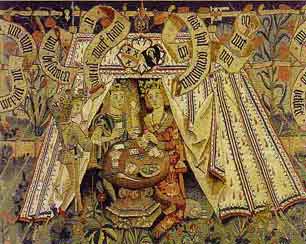
Inspired by these pictures and descriptions of wonderful
tents made for special occasions, the rectangular pavilion has to be a
little of all these, able to combine the functions of mess tent, demonstration
area and sleeping quarters. The household could quite unashamedly invite
even the king or queen to partake of a banquet of sweetmeats here or entertain
them with some play or story. Created to function as an adaptable stage
set, it could be entirely open, |
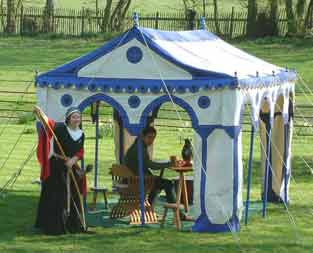
| or a selection of entrances and exits created at will for dramatic effect or increase protection against the weather. |
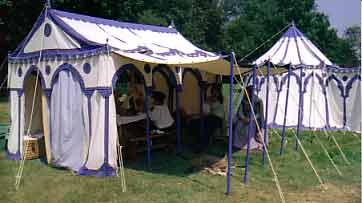
At night the whole edifice became a closed
dormitory. |